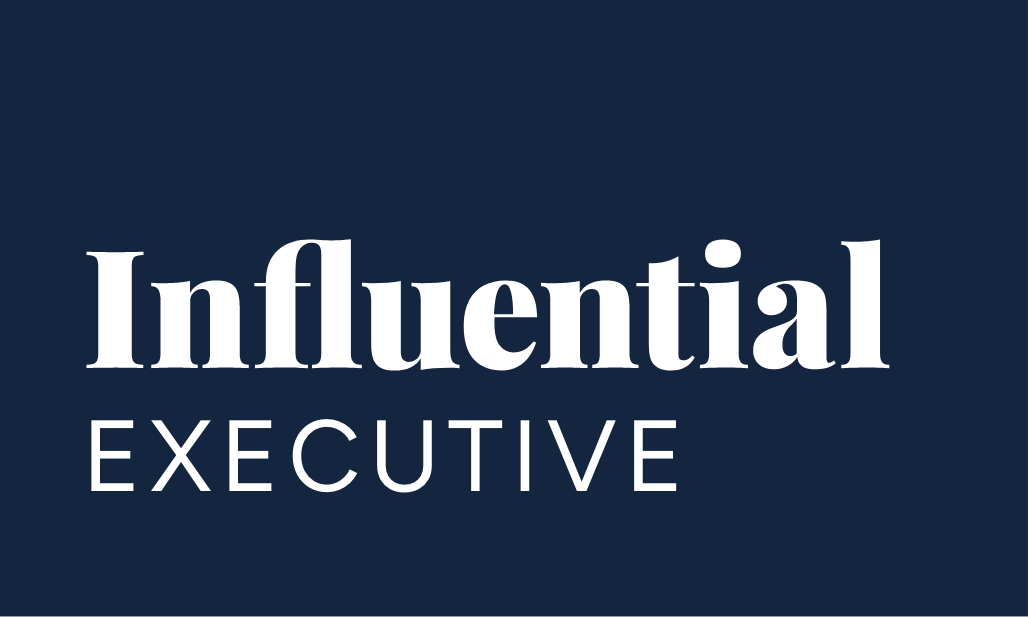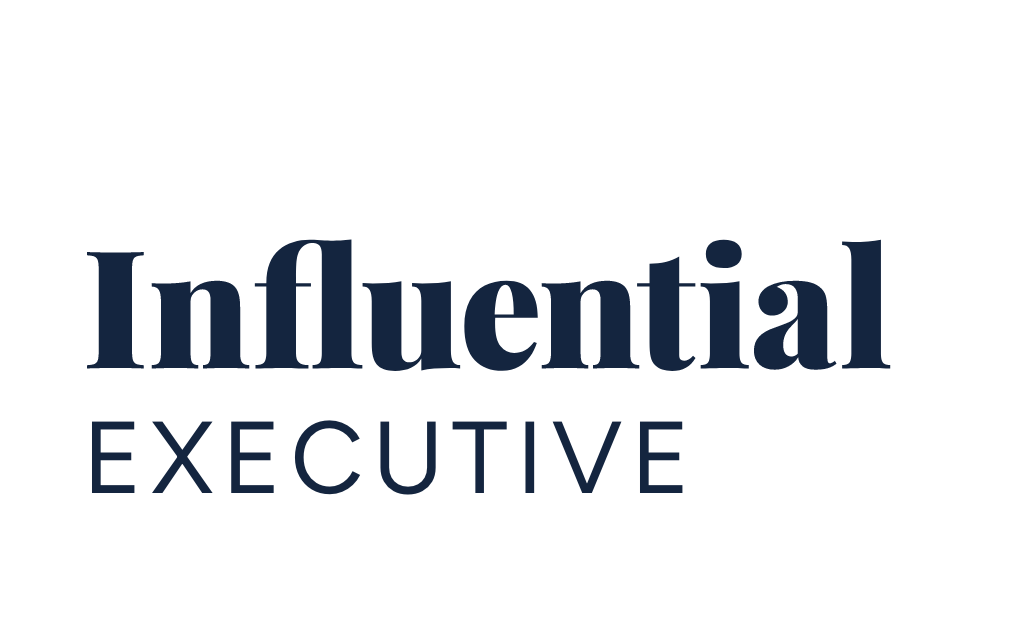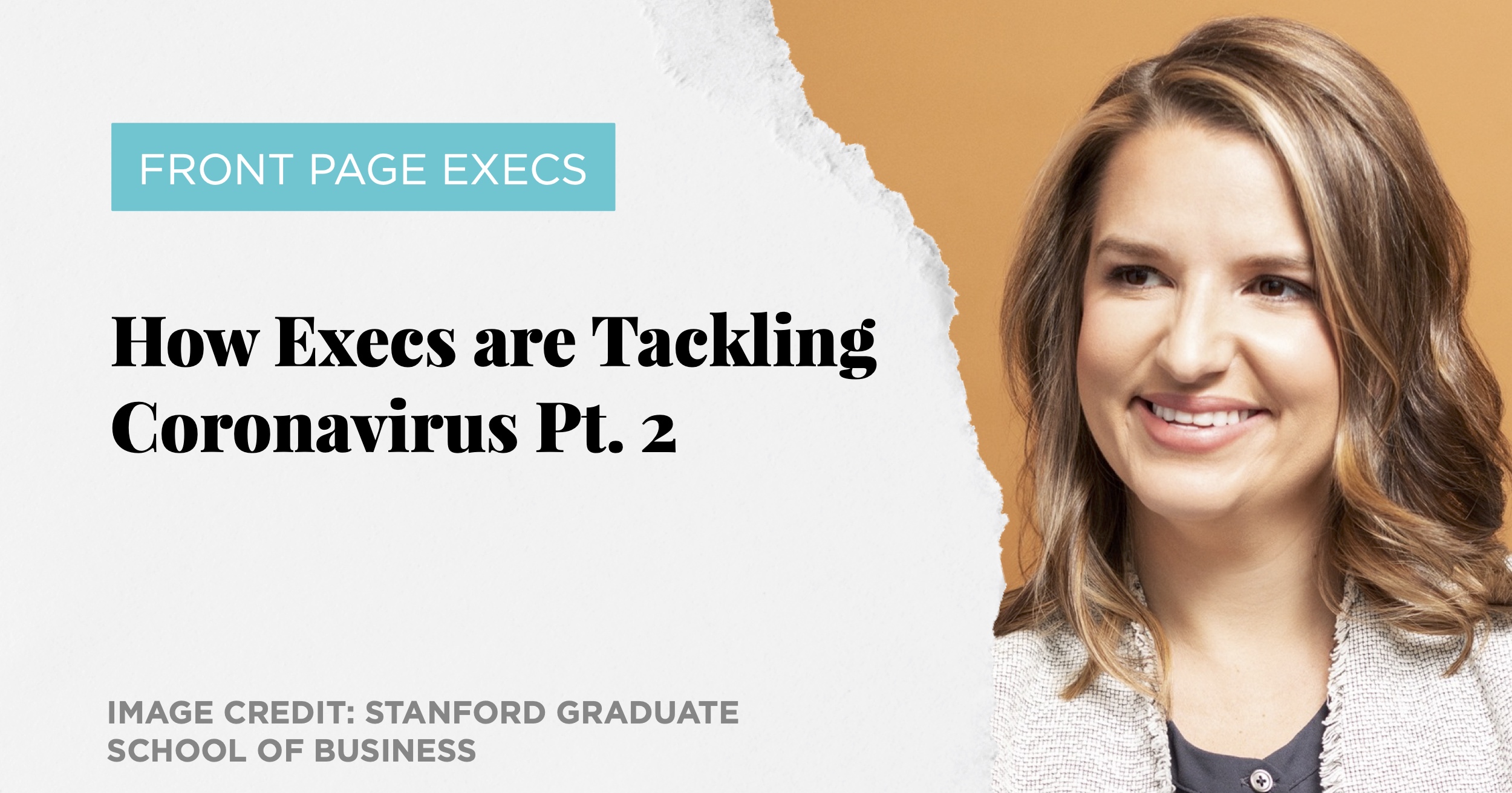This week’s article is a continuation of a previous Front Page Execs post we published a few weeks ago, entitled “How Executives are Tackling Coronavirus.” In it, we discussed the importance of executives using their social media channels to disseminate reputable information about the virus to the public. Social media’s ability to reach a large scale of users makes it an effective tool for doing so. While many of the executives we analyzed in the previous article put out content that actively tackled the spread of misinformation, offered solutions for safer work practices, and provided important healthcare information, the tone over the past week has shifted.
Much of the world is now past the initial informational stage of learning about the disease’s impact. Many have been social distancing for weeks now, people have been working or studying from home, businesses have shut down temporarily, parents are home-schooling their kids, and many have been relying on virtual meetings and video chats for business and socializing purposes. More executives are taking to social media to provide a wider and more supplementary array of information.
Since the situation has quickly evolved, many countries are now facing lockdowns, non-essential businesses have closed, and panic continues to rise, the topic is more relevant now than ever before. In fact, people are looking to business leaders to include topical, relevant coronavirus-related information on their social media pages. Whereas content a few weeks ago focused on providing information, the latest content is branching out into the more inspirational side as many face the ennui and anxiety of staying at home indefinitely.
Taking Action: Rachel Carlson, Satya Nadella, and Neal Mohan
Rachel Carlson and Kenneth Chenault
Rachel Carlson, CEO of Guild Education, is using the digital space and social media to make some big changes. In collaboration with Kenneth Chenault, former CEO of American Express, the two executives co-wrote an open letter to American businesses in regards to coronavirus. In the letter, Carlson and Chenault ask businesses to help contain the spread of the highly contagious (and in some cases, fatal) virus by making moves to cultivate a work-from-home environment when possible. They state, “In this era, CEOs and business leaders can be even more impactful sometimes than the government in making bold and decisive choices that impact everyone.”
The pair recommends donating to reputable organizations, actively supporting frontline healthcare workers, and encouraging social distancing in the workplace. Donations go towards funding national healthcare needs, such as providing important medical supplies to hospitals. The letter was published on Forbes, a reputable global media company, which also helps to legitimize and thus further expand on the letter’s reach.
More than 400 business leaders have already signed the pledge, signifying that they will immediately change their organization’s policies in light of the current coronavirus crisis. Carlson and Chenault even gave this initiative its own hashtag, entitled #StopTheSpread, which will ultimately help improve the content’s reach when being shared on social media, especially when used by other CEOs as well. The use of a branded hashtag also helps encourage others to learn more about the initiative. Carlson and Chenault’s decision to disseminate the letter in the form of an online article is effective, as it is public and can be widely and easily accessed.
Carlson makes use of her Twitter platform to highlight the letter in order to boost awareness around the initiative. In fact, the Tweet (pictured below) is pinned to the top of her profile, which is an effective way to ensure this is the first Tweet users will see when they visit her profile.
What are you doing today to #stopthespread of COVID-19? Here's what @StephenCurry30 & I, along with 400+ amazing leaders, are pledging to do – effective immediately: https://t.co/08OaRfAy8z
— Rachel Romer (@Rachel_R_Romer) March 15, 2020
Carlson also makes sure that her commitment to the cause is not a one-off occurrence on social media, as the rest of her current Twitter feed is filled either with retweets or original posts that include coronavirus-related information, particularly about organizations that are committed to helping those affected by the coronavirus. Much of this content is also directly related to her article, which benefits Carlson’s initiative. She also utilizes the #StopTheSpread hashtag wherever is appropriate in her content, which will further help to expand the content’s reach.
While Carlson is making consistent efforts to utilize her social media platform to spread awareness of the initiative, Kenneth Chenault alternatively does not have any social media accounts. While Carlson herself is making an impact with her own content, it would be effective if Chenault had at least one social profile to spread awareness of the initiative as well.
Satya Nadella
Microsoft CEO Satya Nedalla uses his Twitter account to share coronavirus-related articles, either directly from the Microsoft blog or from trusted third-party sources. Nadella often utilizes “we” in his Tweet copy, using his own voice as a mouthpiece for the company as a whole. This is an effective strategy to better relay a sense of brand authenticity to followers. Nadella is also sure to tag and mention the company in his copy when appropriate, often highlighting the fundraising activities and important partnerships that are happening, keeping users up-to-date about the measures Microsoft is taking to fight against the virus.
Thank you @DrTedros for the partnership. We're here to support @WHO and all of the organizations working tirelessly to combat COVID-19. https://t.co/JtBoF6PBwD
— Satya Nadella (@satyanadella) March 27, 2020
Neal Mohan
Similarly, Chief Product Officer of YouTube, Neal Mohan, uploads Twitter content that is currently only related to the coronavirus. Mohan mainly shares trusted sources from health officials, in addition to providing updates on YouTube’s commitment to helping those who are affected by coronavirus. For example, he showcases YouTube’s #WithMe project, the company’s fundraising efforts. His content is also dedicated to encouraging people to stay at home and partake in social distancing, highlighted in various partnership videos. Mohan’s dedication to primarily putting forth coronavirus-related content shows that he is a leader who is both up-to-date and in touch with relevant news. By incorporating the YouTube brand, he is simultaneously bridging the gap between his actions and that of his company.
Dr. Fauci and @RealDoctorMike talk about #COVID19 and young people as well as what the next few weeks will look like… #StayHome https://t.co/rOPgLiLM5v
— Neal Mohan (@nealmohan) March 31, 2020
Inspirational & Positive Content: Arianna Huffington, Joanna Geary, and more.
Life has changed dramatically for many people and during these uncertain times, it helps to be able to turn to leaders who are dedicated to putting out content that is aimed at uplifting followers. The content these executives share is informative and many have announced new innovations within their company, such as how a business might adapt to cater towards consumers dealing with the current crisis.
Arianna Huffington
Arianna Huffington, founder of Huffington Post and CEO of Thrive Global, primarily uses her LinkedIn account to share original thoughts, third-party articles, and links to Thrive Global’s blog posts. Her LinkedIn page showcases her consistent posting activity where she shares coronavirus-related information that both relates to the healthcare side as well as the more introspective and inspirational side. Huffington is sure to always use relevant hashtags where necessary. She often mentions her own brand, Thrive Global, and consistently makes use of proper tagging in her posts. All of these actions adhere to platform best practices, ensuring her content reaches the right audience who are searching for specific content.
Joanna Geary
Joanna Geary, the Senior Director of Curation of Twitter, uses her Twitter page to take on a casual and more personal approach when it comes to discussing the coronavirus. Her content includes a mix of original posts and retweets, often focused on topics like the struggles of social distancing with young kids, and other entertaining third-party content to help people who are struggling during this time. Geary’s use of humor and transparency, which is translated through the content she shares, allows her to come across as a more personable executive. However, Geary scarcely uses hashtags, which we recommend should be used to help expand on audience reach.
Let this wee granny tell you everything will be okay 🏴 https://t.co/K0ODMSVVE3
— J Geary ⚡️💙 (@JoannaG) April 2, 2020
Tim Cook
Tim Cook, CEO of Apple, uses Twitter to post a lot of his own original Tweets, and is consistent in reflecting upon current times. As the CEO of a renowned company, Cook’s personal social media presence helps ensure a sense of authenticity is communicated to users, showing them that there is a face behind the brand. Cook accomplishes this by making use of the platform’s various services, such as posting personal videos for brand announcements. Cook also makes effective use of mentioning the Apple brand when it is relevant, such as the announcement for virtual coaching (pictured below). Cook effectively uses a personal tone in his content, and he simultaneously understands how and when to organically promote the company’s brand.
Grateful for the teachers finding incredible new ways to bring lessons to life while at home. We’re glad to be able to support them with virtual 1:1 coaching, collections of helpful apps and books to enable remote learning, and more. https://t.co/5TVTyCUHeN
— Tim Cook (@tim_cook) March 27, 2020
Chris Hemsworth
Lastly, Chris Hemsworth, actor and co-founder of the app Centrfit, recently shared on his personal Instagram page that in light of social distancing, the app is offering six weeks of health and fitness programs for free. While not all companies can afford to offer free services like this, Hemsworth’s announcement shows that Instagram can be utilized effectively for video announcements. The fact that the video came from him as well, rather than a company representative, will help maximize audience reach as well as contribute to brand authenticity. Additionally, Hemsworth has a larger following on his personal social media account than the Centrfit account does. Thus, Hemsworth using his platform to make brand-related announcements will reach a larger audience, which will help to broaden brand awareness.
Our Tips for Executives on Social Media During the Pandemic
Many businesses are also taking to email to make coronavirus-related announcements. This method is certainly an effective way for CEOs to talk to consumers, as customers want to hear from CEOs directly and not a faceless brand during times of crisis. However, since email is a medium that is less public compared to social platforms like Twitter, LinkedIn, Facebook, and Instagram (i.e. you have to be a subscriber to receive an email from a specific company), having an executive social media presence is important as the audience reach is much larger and more accessible.
We have found that Twitter is an optimal platform for sharing shorter-form information, or can also be used to link to longer threads, articles and blog posts, and other third-party information.
LinkedIn is an effective resource for executives to use when sharing longer-form content, especially because many users turn to executives in order to educate and inform themselves. Original thoughts and more detailed posts can be explored on this platform, whereas on Twitter, the character count forces users to keep their content short and to the point.
Lastly, Instagram is effective for sharing more visual content, since the platform’s primary content formats are photos and videos. Given the cancellation of in-person events and meetings, more people are relying on video, making it an optimal tool for CEOs to make business announcements. Since many executives are now working in the virtual space, they can use Instagram to connect with their followers by sharing videos and pictures of themselves.
Is your marketing team ready to get your executive(s) on social media? Download our free step-by-step guide on how to get your executive on social. In the meantime, why not follow Influential Executive on Instagram for interesting business stats, inspiring leadership quotes from today’s top executives, and more!


